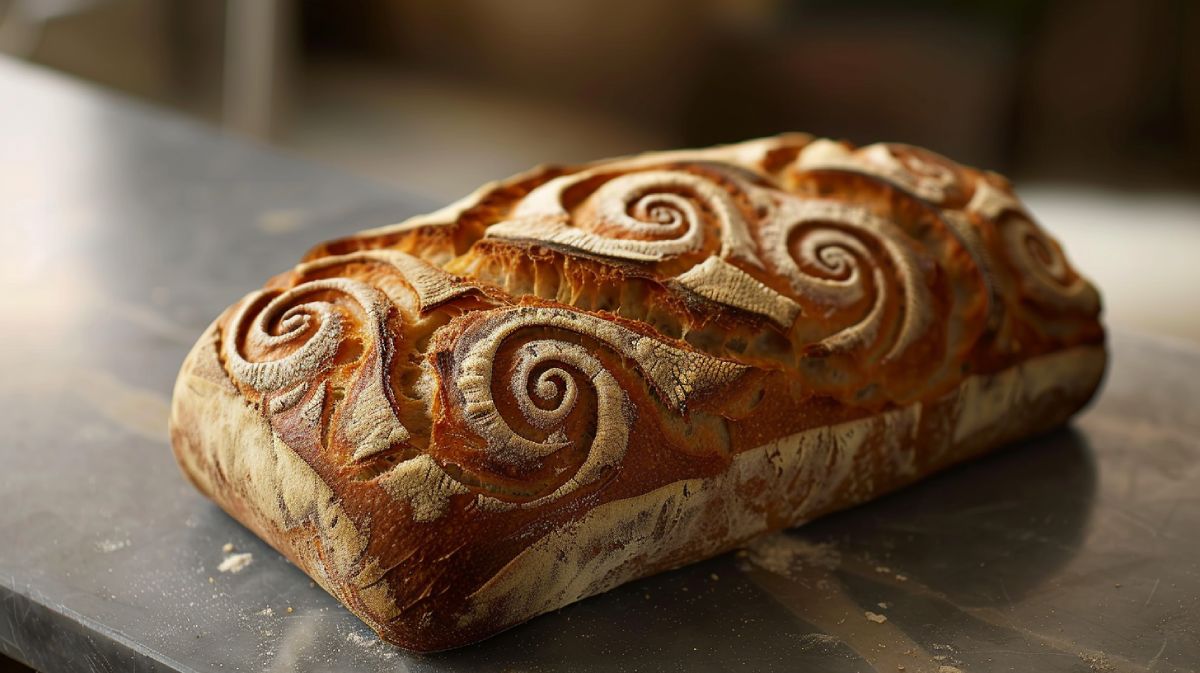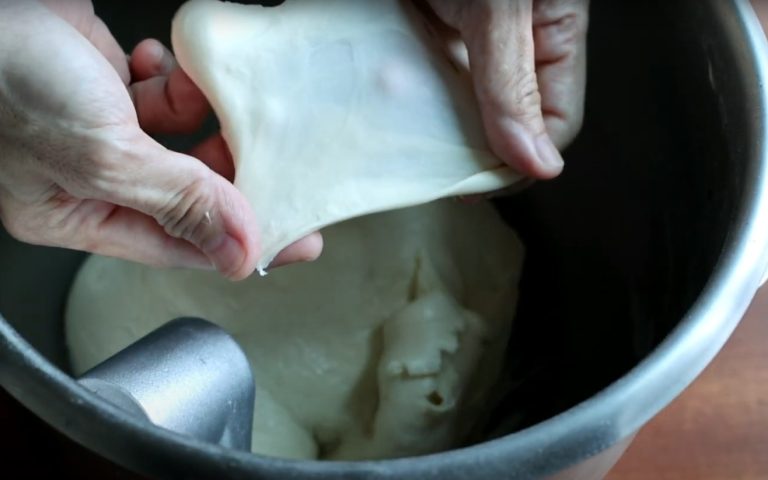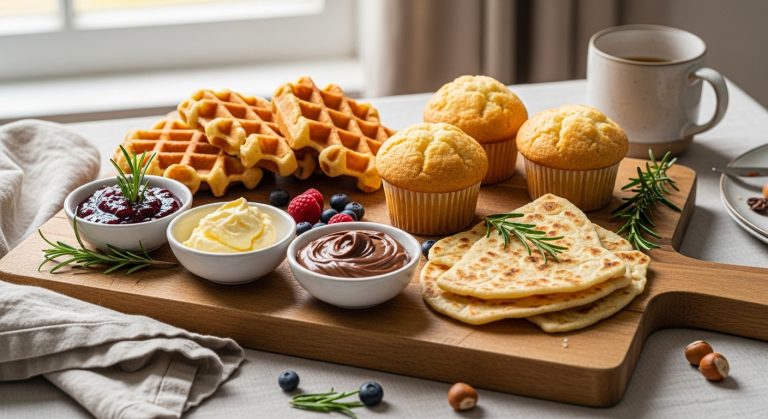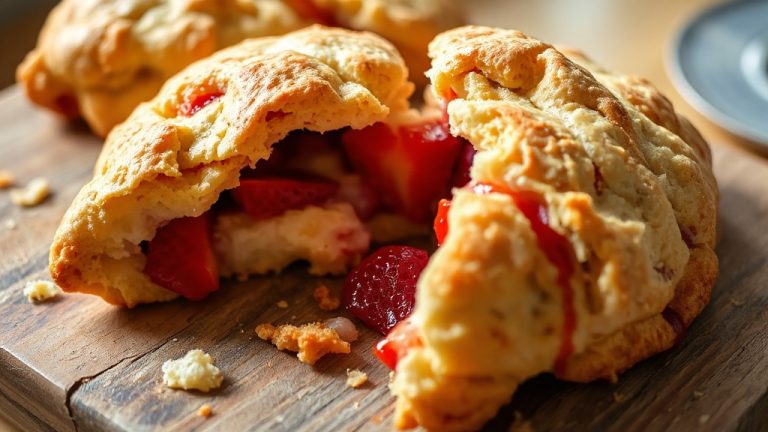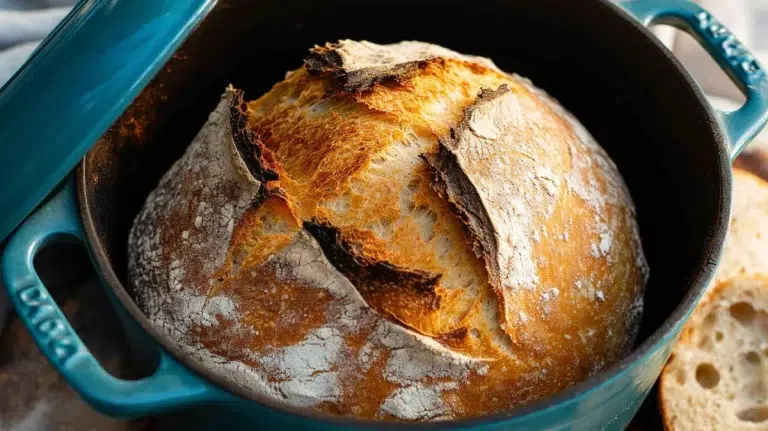How to Make Designs on Sourdough Bread: Artistry in the Crust
To make beautiful designs on your sourdough bread, start by ensuring your sourdough starter is active and bubbly. Dust your dough with a 50/50 mixture of rice flour and all-purpose flour for a striking contrast.
Use a sharp lame or knife to create clean cuts at a 45-degree angle. Experiment with patterns like leaf cuts or diamond crosshatches.
Shallow cuts will yield artistic flair, while deeper scores allow for dramatic expansion. If you’re keen to explore more advanced techniques and tips, there’s so much more to discover to elevate your baking game.
Key Takeaways
- Prepare the dough by dusting it with a 50/50 mixture of rice flour and all-purpose flour for better contrast in designs.
- Use a sharp scoring tool, such as a lame or razor blade, held at a 45-degree angle for clean cuts.
- Experiment with various scoring patterns like leaf cuts, cross scores, and diamond crosshatch for creative designs.
- Make shallow cuts for artistic patterns and deeper cuts for enhanced dough expansion during baking.
Essential Scoring Tools
A good set of scoring tools can transform your sourdough baking experience, allowing you to create beautiful, intricate designs that showcase your craftsmanship. To get started, consider investing in the following essential tools:
- Lame: A specialized tool that holds a sharp razor blade for precise cuts, perfect for creating artistic scores on your dough.
- Razor blade or sharp knife: If you don’t have a lame, these can serve as effective alternatives, though they require careful handling for clean cuts.
- Wire Monkey UFO: A specialty lame designed to help you achieve unique and intricate patterns on your loaves, elevating your scoring designs.
- Cake turntable: This handy tool helps you maneuver your dough easily, allowing for ideal angles when scoring.
With the right scoring tools, you’ll find it easier to make stunning designs that impress both friends and family. So gear up, and let your creativity flow as you begin your sourdough journey!
Scoring Techniques and Patterns
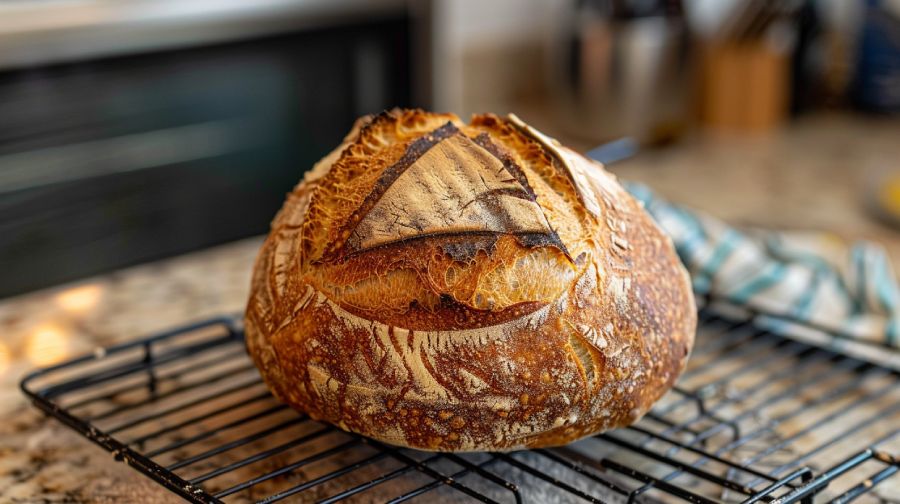
Mastering scoring techniques and patterns can elevate your sourdough bread from simple loaves to stunning works of art that capture everyone’s attention. To achieve clean scoring lines, guarantee your dough surface preparation is spot on; dust the dough with a 50/50 mixture of rice flour and all-purpose flour for contrast.
Utilizing a sharp razor blade or scoring tool is vital for precise cuts that showcase your creativity. Here’s a quick reference on scoring techniques and their effects:
| Scoring Technique | Effect |
|---|---|
| Leaf Cut | Creates intricate patterns |
| Cross Scores | Dramatic expansion during baking |
| Diamond Crosshatch | Adds visual appeal |
| Basic Slashes | Simple and effective designs |
Creative Sourdough Designs
Incorporating creative designs into your sourdough bread not only enhances its visual appeal but also allows you to express your personal style as a baker. By mastering sourdough scoring techniques, you can achieve stunning results that elevate your loaves.
When you score your bread, remember to use a sharp lame or razor blade for clean cuts, which prevent tearing and encourage a good oven spring.
Here are some scoring tips to inspire your creations:
- Experiment with different styles like leaf cuts, cross scores, and diamond crosshatch.
- Use shallow cuts for artistic elements, reserving deeper cuts for expansion.
- Consider templates or sketches to maintain consistency in your designs.
- Make small cuts around the dough to create intricate patterns.
Tips and Challenges
What common challenges do bakers face when trying to achieve the perfect sourdough loaf, and how can you overcome them to enhance your baking experience?
First, confirm your sourdough starter is active and bubbly; this is vital for peak oven spring. An inactive starter can lead to flat loaves, so always check its readiness before you start your sourdough bread recipe.
Next, pay attention to bulk fermentation. Monitor the dough’s fermentation time and temperature, as under or over-fermentation can create scoring challenges and undesirable shapes.
When it’s time to score the bread, utilize a sharp lame or razor blade, holding it at a 45-degree angle. This technique guarantees precise cuts for your designs while allowing controlled expansion during baking.
For cleaner, more defined scoring lines, dust your dough with a mixture of 50% white rice flour and 50% all-purpose flour before you make the dough.
As you practice different scoring techniques, you’ll improve your designs and learn how the dough reacts, making scoring sourdough an enjoyable part of your baking journey.
Embrace these tips to navigate challenges and elevate your sourdough skills!
Frequently Asked Questions
How Do You Get Designs on Sourdough Bread?
To get stunning designs on your sourdough, you’ll want to score the dough with a sharp tool. Experiment with different techniques, and don’t forget to dust lightly with flour for contrast before baking!
How to Make Designs on Top of Bread?
When it comes to making designs on top of bread, you’ll want to grab a sharp tool and confidently score your dough. Experiment with patterns and watch your creations rise to the occasion with stunning flair!
What Tool Is Used to Make Designs on Bread?
To make designs on bread, you’ll want to use a lame or a sharp razor blade for clean cuts. Scissors and a fine-mesh sieve can also enhance your creativity and precision while scoring the dough.
When to Decorate Sourdough?
You’ll want to decorate your sourdough just before it enters the oven. Make certain it’s proofed well; then, confidently score with a sharp tool. This timing creates stunning, defined patterns that elevate your baking experience.
Transform Your Sourdough: Turning Bread Baking into Art
Creating beautiful designs on your sourdough bread is like painting on a blank canvas—each loaf holds the potential for artistry.
With the right tools and techniques, you can transform a simple bread into a masterpiece that delights the eyes as much as the palate.
So, embrace your creativity, experiment with different patterns, and don’t shy away from challenges.
Each bake is an opportunity to express yourself, making every loaf a unique story waiting to be savored.

